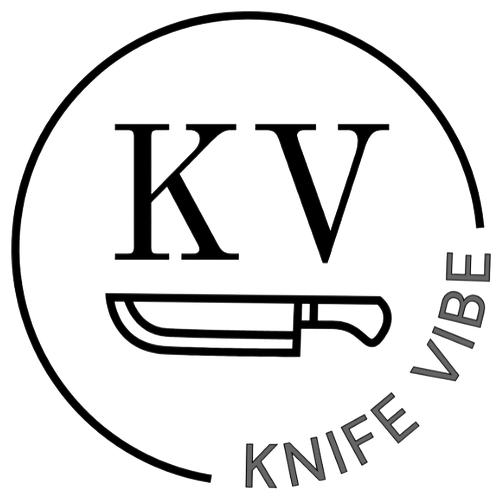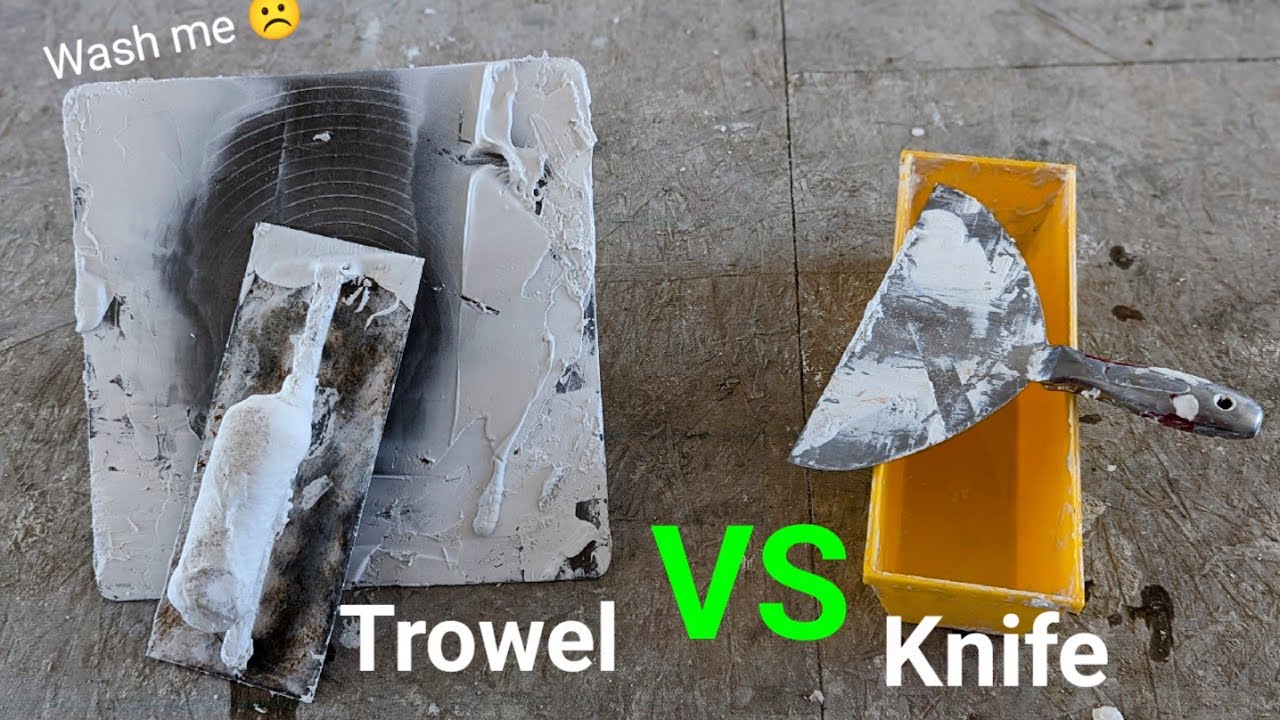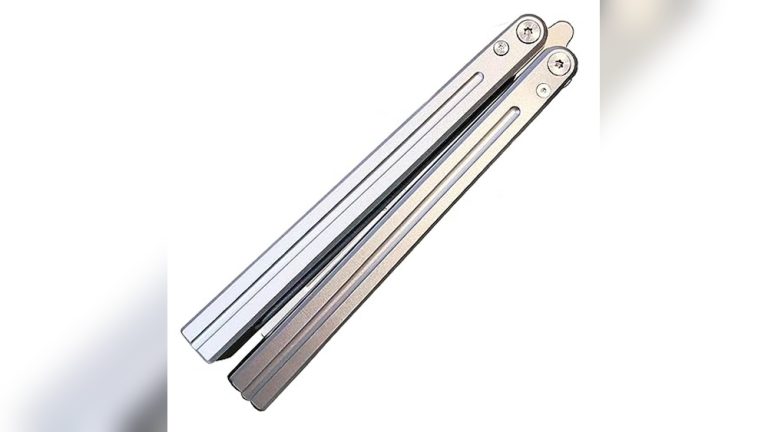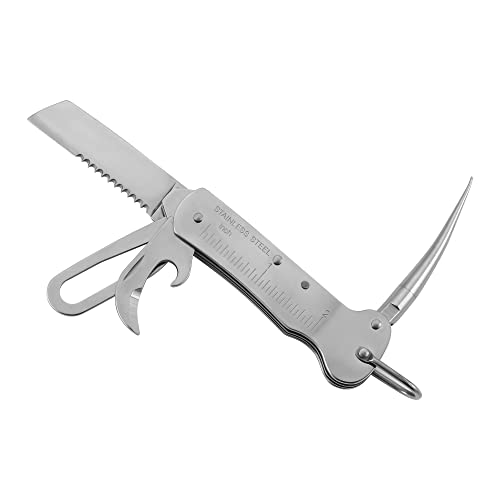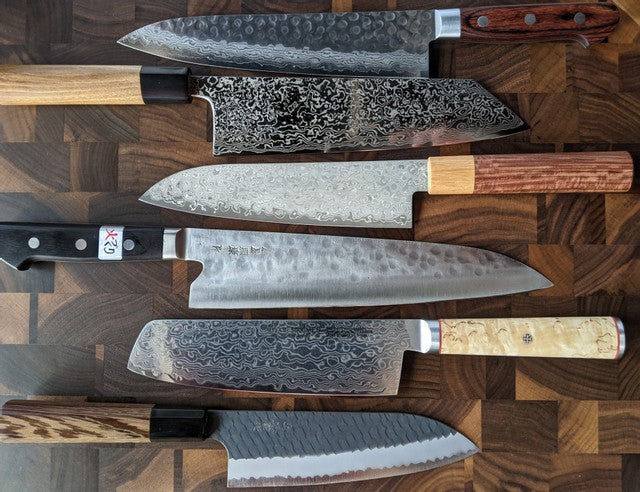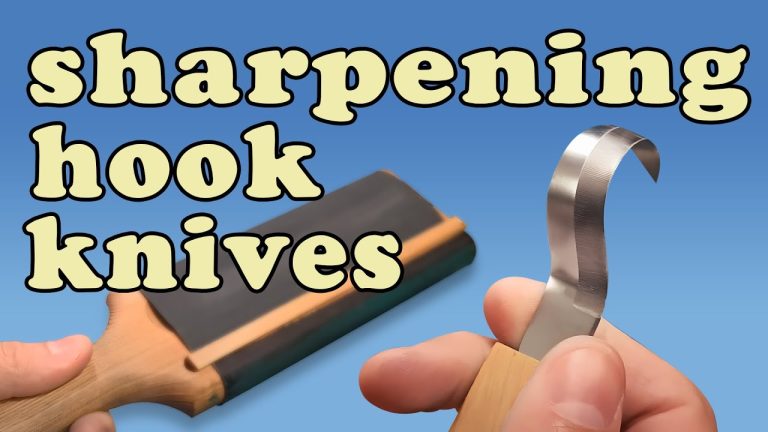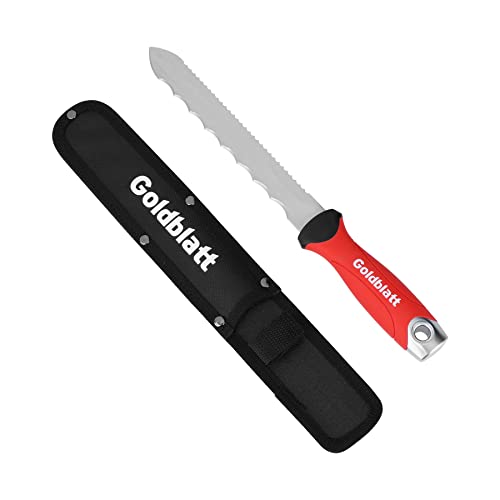Drywall Knife Vs Trowel: Which Tool is Best for Your Project?
Drywall Knife and Trowel are essential tools for drywall work. Both have unique features and uses.
Comparing these tools can help you choose the right one for your project. A drywall knife is great for cutting and smoothing drywall. It’s lightweight and easy to handle. A trowel, on the other hand, is used for applying and spreading joint compound.
It covers large areas quickly. Knowing the differences can save time and improve your work quality. In this blog, we will explore the pros and cons of each tool. By the end, you’ll know which tool suits your needs best. Let’s dive into the details and make your drywall project a success.
Introduction To Drywall Tools
Drywall tools are essential for any construction or renovation project. They help in creating smooth and even surfaces on walls and ceilings. Two common drywall tools are the drywall knife and the trowel.
Each tool has its unique features and uses. Understanding these tools can make your work easier and more efficient.
Purpose Of Drywall Tools
Drywall tools serve to cut, shape, and smooth drywall. They ensure the walls and ceilings are even and ready for painting. A drywall knife is used for cutting and applying joint compound. A trowel is used for spreading and smoothing the compound.
Both tools are crucial for achieving a professional finish. They help in covering seams and fixing imperfections.
Importance In Construction
Drywall tools are vital in construction. They ensure the durability and appearance of the walls. Properly using these tools can prevent cracks and uneven surfaces. This leads to a longer-lasting and aesthetically pleasing finish.
Both DIY enthusiasts and professional contractors rely on drywall tools. They are indispensable in creating high-quality structures.

Credit: wallboardtrim.com
Drywall Knife Features
Choosing the right drywall knife can make your drywall work easier and more efficient. Here, we will explore the main features of a drywall knife, focusing on blade material and handle design.
Blade Material
The material of the blade is crucial for the performance of a drywall knife. Different materials offer various benefits. Below is a comparison of common blade materials:
| Material | Durability | Flexibility |
|---|---|---|
| Stainless Steel | High | Medium |
| Carbon Steel | Medium | High |
| Plastic | Low | High |
Stainless steel blades are resistant to rust. This makes them durable and long-lasting. Carbon steel blades offer great flexibility. They adapt well to different surfaces. Plastic blades are lightweight and flexible but less durable.
Handle Design
The design of the handle impacts comfort and control. A good handle design can reduce hand fatigue. Here are some features to consider:
- Ergonomic Handle: Fits comfortably in the hand.
- Non-slip Grip: Provides better control, especially when hands are wet.
- Lightweight: Reduces hand fatigue during extended use.
An ergonomic handle reduces strain on your hand. A non-slip grip ensures the knife stays secure in your hand. A lightweight handle makes it easier to use for long periods.
Understanding these features will help you choose the right drywall knife. This will enhance your drywall work’s efficiency and quality.
Trowel Features
The trowel is a vital tool in drywall work. Its features make it unique and essential for various tasks. Let’s explore some of the key features that make trowels so useful in drywall installation and finishing.
Blade Types
Trowels come with different blade types. These variations make them versatile for different jobs.
- Square-edged blades: Ideal for spreading and smoothing materials evenly.
- Rounded-edged blades: Perfect for feathering edges and preventing lines.
- Pointed blades: Great for precision work in tight corners.
Each blade type serves a specific purpose. Choosing the right one can make your work easier and more efficient.
Handle Ergonomics
The handle of a trowel is crucial for comfort and control. Ergonomically designed handles reduce strain and fatigue during use.
Consider the following features:
- Soft grips: Provide comfort and reduce slipping.
- Contoured shapes: Fit the hand better for improved control.
- Balanced design: Ensures even weight distribution.
Using a trowel with a well-designed handle can improve your work quality. It also helps you work longer with less discomfort.
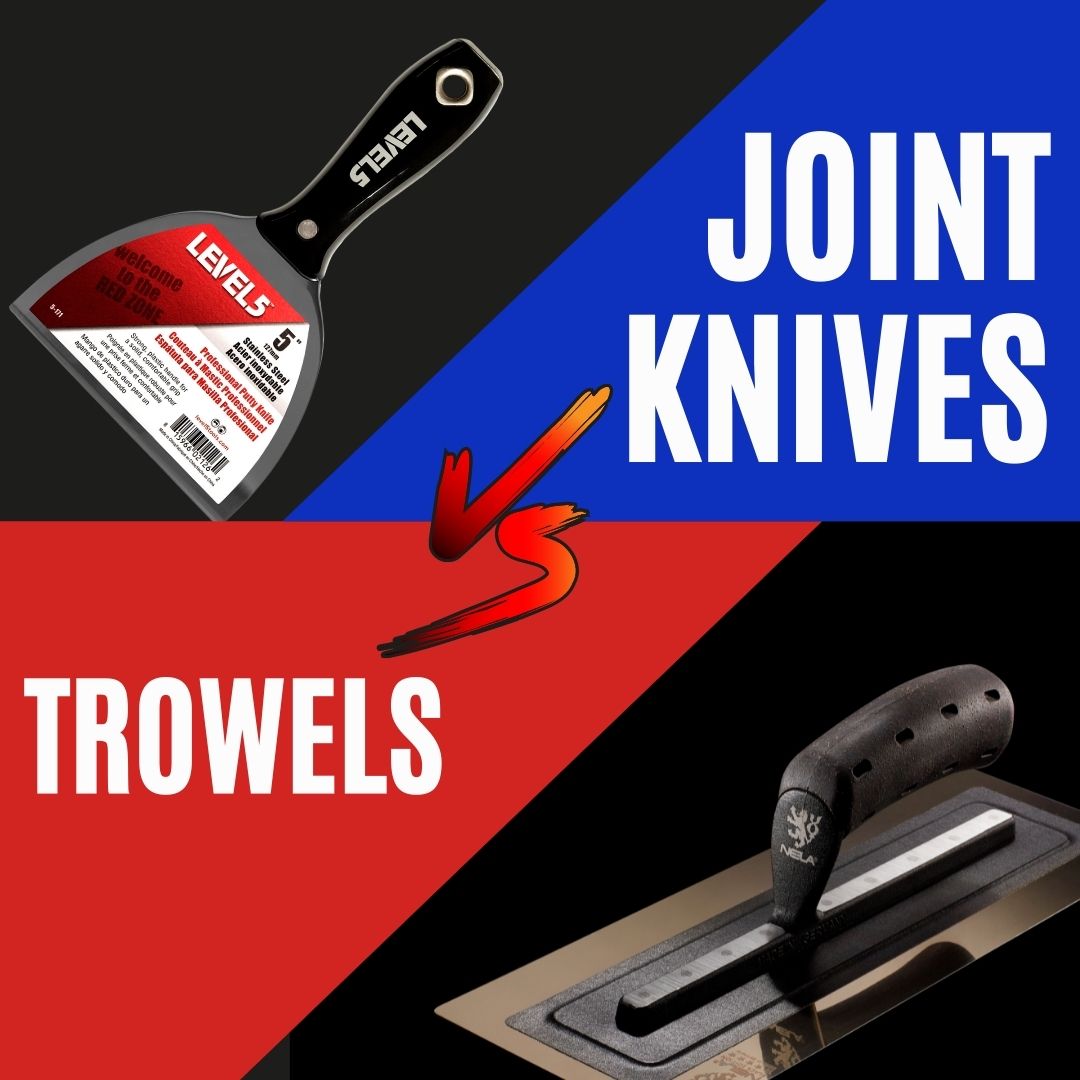
Credit: masterbuildingmaterials.com
Pros Of Using A Drywall Knife
Drywall knives are essential tools for any drywall project. They offer several advantages that can make your work easier and more precise. Understanding these benefits helps in making an informed choice between a drywall knife and a trowel.
Precision Cutting
Drywall knives excel in precision cutting. They allow you to make clean and accurate cuts, which is crucial for fitting drywall sheets perfectly. The sharp edge of the drywall knife gives you control, reducing the chances of mistakes.
This precision is especially useful for cutting around electrical outlets, windows, and doors. A well-cut piece of drywall saves time and reduces material waste, making your project more efficient.
Ease Of Use
One of the main benefits of a drywall knife is its ease of use. The lightweight design makes it comfortable to handle, even for extended periods. This is important for both professionals and DIY enthusiasts.
- Lightweight and easy to handle
- Reduces hand fatigue
- Simple to maneuver
Drywall knives come in various sizes, usually ranging from 4 to 12 inches. This variety allows you to choose a size that fits your hand and your project’s needs. The knife’s design also provides better control, making it easier to apply joint compound smoothly.
Cons Of Using A Drywall Knife
While a drywall knife is a common tool for professionals and DIY enthusiasts, it has certain drawbacks. Understanding these cons can help you decide if a drywall knife is the right tool for your project.
Limitations In Application
A drywall knife has limited applications. It is primarily used for taping and finishing drywall seams. For larger surfaces, a drywall knife can be less efficient. The narrow blade is not ideal for applying mud over large areas. This can make the process slow and less effective.
The drywall knife is also not suitable for detailed work. Its straight edge lacks the flexibility needed for intricate tasks. This can make it difficult to achieve a smooth finish in corners and tight spaces. For these tasks, a trowel might be a better choice.
Potential For Blade Wear
Another concern is the potential for blade wear. Frequent use can dull the blade over time. This can affect the quality of your work. A dull blade can leave streaks and uneven surfaces. This requires more sanding and reapplication of compound, increasing the workload.
Additionally, replacing worn blades can add to your costs. While not expensive, the cost of new blades can add up over time. This is especially true for large projects or frequent usage.
| Issue | Impact |
|---|---|
| Limited Applications | Less efficient for large surfaces |
| Blade Wear | Requires more maintenance and replacement |
In summary, while a drywall knife is useful, it has its limitations. Understanding these can help you choose the right tool for your next drywall project.

Credit: www.youtube.com
Pros Of Using A Trowel
Choosing the right tool for drywall finishing can make a big difference. A trowel offers several advantages that can enhance your drywall projects. Here are some key benefits of using a trowel for drywall work.
Versatility In Application
A trowel is highly versatile. It can be used for various tasks. From spreading mud to smoothing out drywall, it handles multiple jobs. Its broad blade covers more area, reducing time spent on large surfaces. This efficiency is a major plus.
You can also use a trowel for applying different materials. It works with plaster, joint compound, and even stucco. This makes it a multi-purpose tool in your toolkit.
Durability
Durability is another significant advantage of using a trowel. Most trowels are made from high-quality materials. Stainless steel blades are common, offering long-lasting performance.
These materials resist rust and wear. This ensures that your trowel remains effective over time. Investing in a durable trowel can save you money. You won’t need frequent replacements.
| Benefit | Details |
|---|---|
| Versatility | Can be used for various materials and tasks. |
| Coverage | Broader blade covers more surface area. |
| Durability | Made from high-quality materials like stainless steel. |
| Rust Resistance | Materials resist rust and wear. |
In summary, a trowel is versatile and durable. These features make it a valuable tool for drywall projects. Consider these pros when choosing your next drywall tool.
Cons Of Using A Trowel
A trowel can be harder to control when applying drywall compound, leading to uneven surfaces. It also tends to create more mess compared to a drywall knife.
Using a trowel for drywall work has some downsides. These drawbacks might make you think twice before choosing it over a drywall knife. Here are some of the main cons of using a trowel.Learning Curve
A trowel has a steeper learning curve. It takes time to master the right technique. Beginners might find it challenging to use. Mistakes are common at first. This can lead to frustration and wasted materials.Weight And Balance
Trowels are heavier than drywall knives. The weight can cause hand fatigue. This makes long projects more tiring. The balance of a trowel is also different. It might feel awkward in your hand. This can slow down your work and affect the quality. “`Choosing The Right Tool For Your Project
Choosing between a drywall knife and a trowel can be confusing. Both tools have specific uses. Understanding their differences helps in selecting the right tool. Each tool suits different project types and skill levels. Let’s dive into these aspects.
Project Type Considerations
Drywall knives are versatile. They work well for small repairs and taping joints. They are ideal for applying joint compound. They come in various sizes, making them suitable for different tasks.
Trowels are best for larger surfaces. They help in spreading plaster or stucco. Trowels are commonly used in masonry and plastering projects. Their wide blades cover more area, reducing work time.
Skill Level
Beginners find drywall knives easier to use. They offer more control. Their smaller size is less intimidating. Learning to handle a drywall knife takes less time.
Trowels require more skill. They are heavier and harder to manage. They need a steady hand and experience. Professionals often prefer trowels for large-scale projects.
Understanding your skill level is crucial. Choose a tool that matches your ability. This ensures better results and reduces frustration.
Frequently Asked Questions
What Is A Drywall Knife Used For?
A drywall knife is used for applying joint compound, taping seams, and smoothing drywall. It ensures a smooth finish.
What Is A Trowel Used For?
A trowel is used for spreading and smoothing plaster or mortar. It is essential for masonry and finishing tasks.
Can You Use A Trowel For Drywall?
A trowel can be used for drywall, but it’s not ideal. A drywall knife provides better control and finish.
Which Is Better For Beginners: Drywall Knife Or Trowel?
A drywall knife is better for beginners. It’s easier to handle and provides more precision for drywall tasks.
Conclusion
Choosing between a drywall knife and a trowel depends on your project needs. Drywall knives excel in precision and smaller tasks. Trowels are better for larger surfaces and smooth finishes. Consider the size and type of your project before deciding.
Both tools have their unique strengths. Use the right one for the best results. Happy building and renovating!
